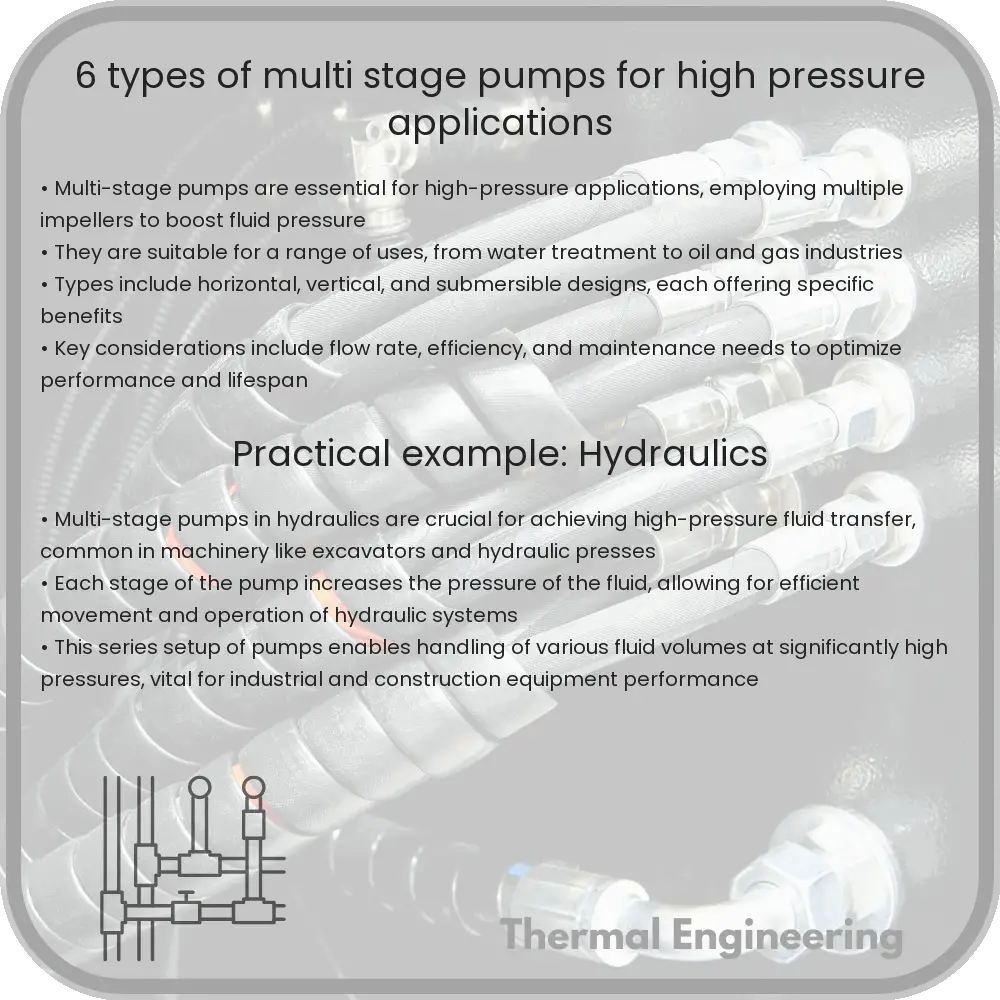Learn about six common types of multi-stage pumps and their applications in high-pressure scenarios across industries like water treatment and oil and gas.

6 Types of Multi-Stage Pumps for High-Pressure Applications
Multi-stage pumps are crucial in applications that require high pressure. These pumps use multiple impellers, or stages, to generate higher pressures than single-stage pumps. This feature makes them ideal for industries like water treatment, boiler feed water, and oil and gas operations. Below are six common types of multi-stage pumps and their typical uses in high-pressure applications.
1. Horizontal Multi-Stage Centrifugal Pumps
These pumps have a horizontal shaft with multiple impellers arranged along it. Each impeller adds to the pressure head, enabling the pump to achieve considerable pressures. Horizontal multi-stage pumps are widely used for water supply systems and in industries requiring high pressure, such as HVAC systems and municipal water services. Their horizontal layout makes maintenance relatively straightforward compared to vertical configurations.
2. Vertical Multi-Stage Centrifugal Pumps
Vertical multi-stage centrifugal pumps feature a vertical shaft with a series of impellers stacked above each other. This design is particularly beneficial for saving floor space and is often employed in deep well pumping and industrial cooling processes. The vertical configuration also helps in maintaining a consistent pressure head for liquids at great depths.
3. Ring Section Multi-Stage Pumps
Ring section multi-stage pumps consist of several ring-like segments, each housing one or more impellers. These segments are bolted together to form the pump. This modular design is advantageous for handling high-pressure and high-temperature applications, commonly found in boiler feed water and desalination plants.
4. Axial Split Case Multi-Stage Pumps
This type of pump splits horizontally, allowing easier access to the internal components. The design is suitable for handling high flow rates and pressures, and is often used in water supply and irrigation systems. Each stage of the pump can handle a higher flow, making it ideal for applications that require both high pressure and high volume.
5. Radial Split Case Multi-Stage Pumps
Radial split case pumps are designed with a vertical split in their casing. They are used for high-pressure applications such as oil and gas production. The radial design helps these pumps withstand the high pressures found in upstream oil operations, where pumping conditions can be particularly harsh.
6. Submersible Multi-Stage Pumps
These pumps are designed to operate while submerged in the fluid they are pumping. Submersible multi-stage pumps are typically used for deep well pumping, where multiple stages are needed to lift water to the surface. They are also used in offshore drilling operations for their ability to handle high pressure and submerged conditions.
Conclusion
Multi-stage pumps are versatile and efficient solutions for high-pressure applications across various industries. Each type of multi-stage pump offers unique advantages and is suited to particular conditions and requirements. Understanding the differences between these pumps can help in selecting the right type for specific industrial needs. By leveraging the right multi-stage pumps, industries can enhance their operations’ efficiency and reliability, ensuring that high-pressure tasks are managed effectively.